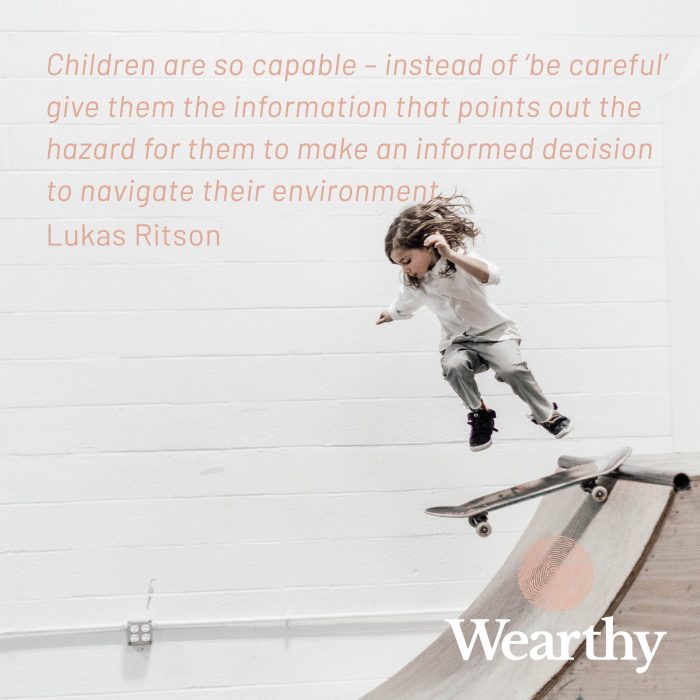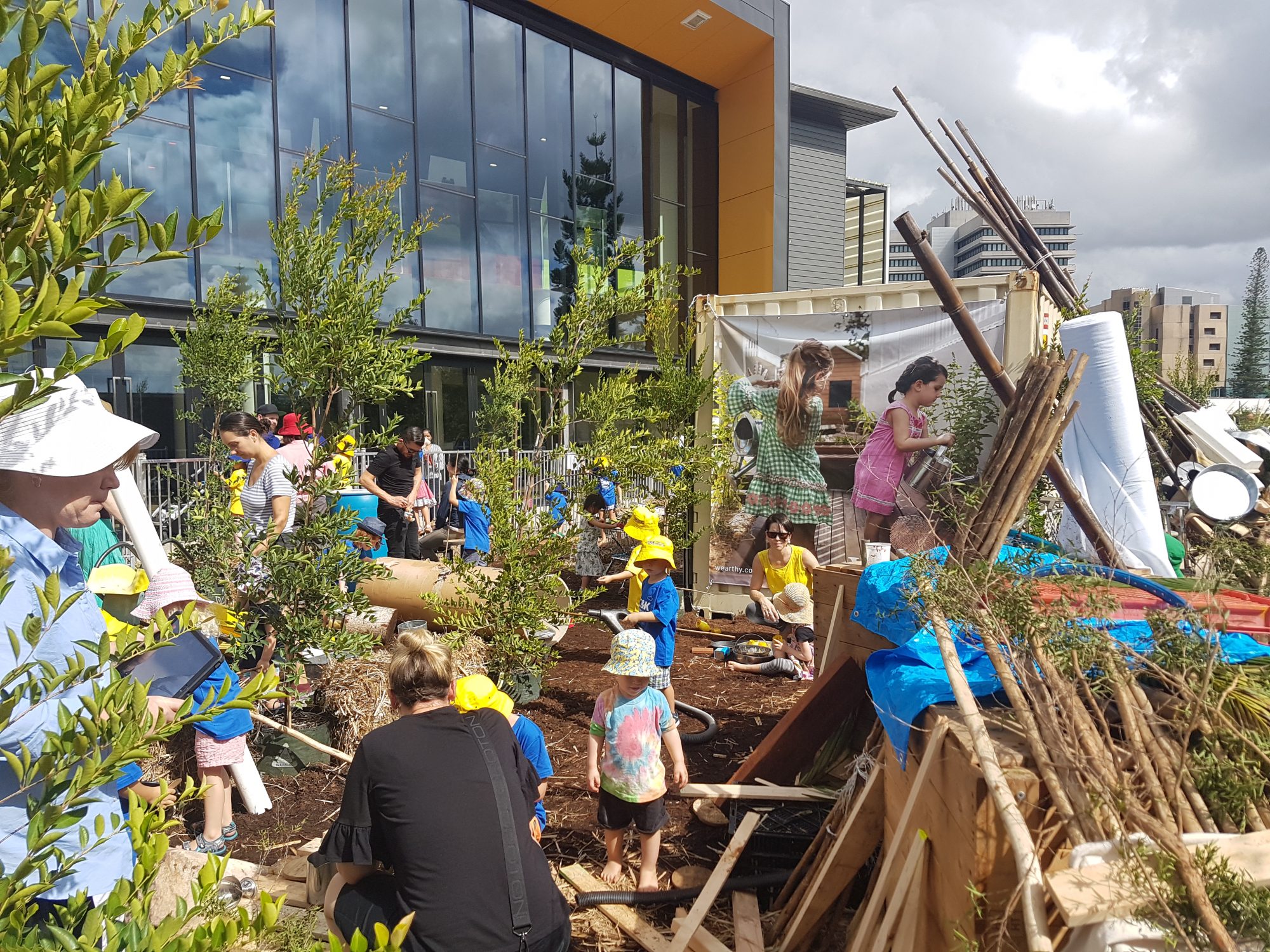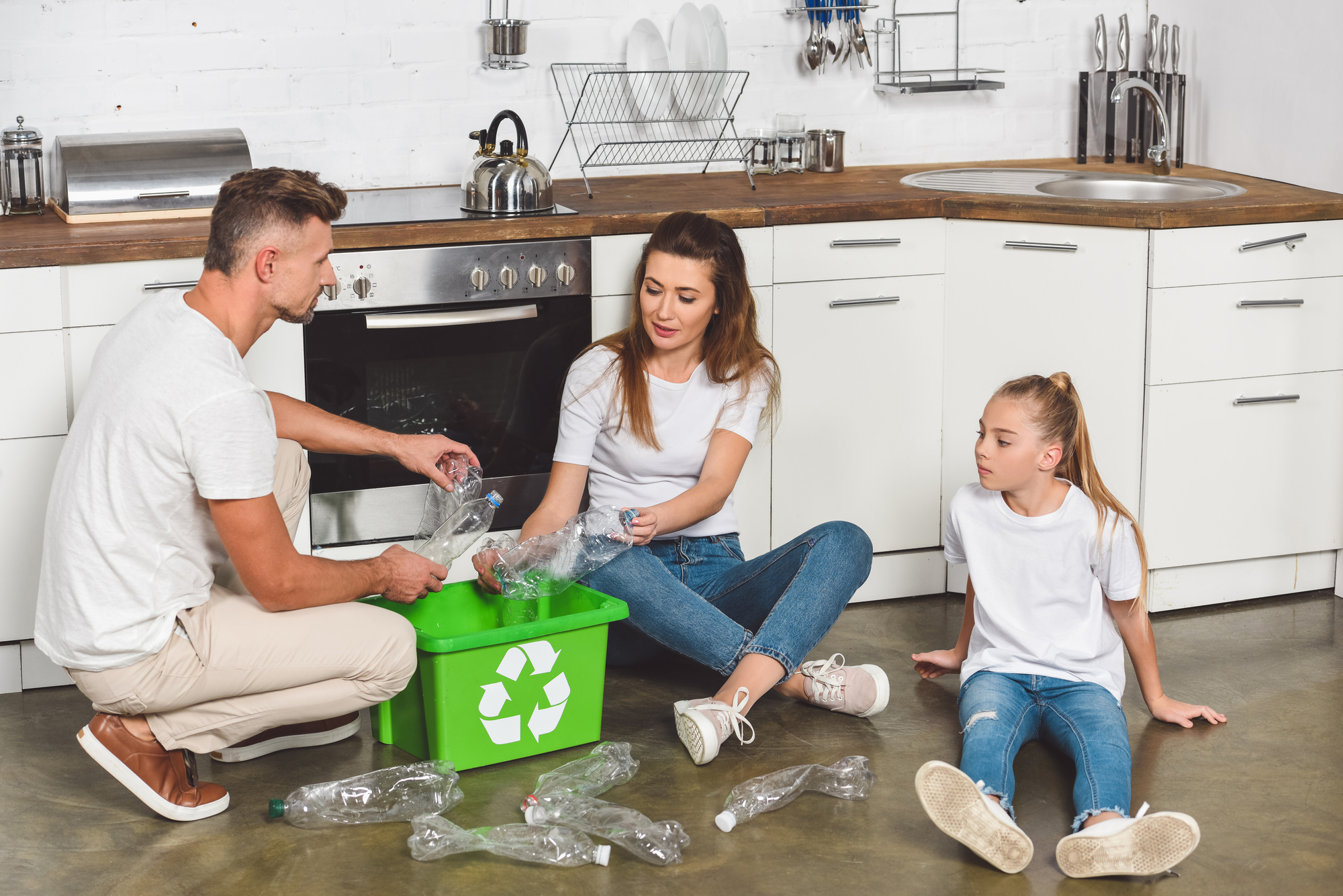How loose parts play builds new worlds for children.
It’s not pretty. Loose parts play can look like the Tupperware cupboard and recycling bin had a wrestling match, and everyone lost. Everyone except the child contently playing in the delightful mess, she started it. Loose parts play is the type of chaos that children are drawn to and our role is to support it, the best way we can.
Loose parts play is made up from materials that can be moved, manipulated, constructed, rearranged, taken apart, put together and given a destiny that is determined by a child – rather than an adult, or manufacturer. Loose parts can be natural or synthetic and used in endless play scenarios. This type of play inspires innovation and creativity, improves concentration and problem-solving skills, develops social and emotional thinking, and empowers children to thrive in a versatile environment that they have complete ownership of.
If we take loose parts play outside, learning is abundant and play is limitless. With exploration comes not only invention, but survival. These open-ended learning opportunities for children are seen in the short documentary, The Land, based on a Welsh adventure playground with the same name supervised by qualified Playworkers. Filmmaker Erin Davis describes The Land as “a play space rooted in the belief that kids are empowered when they learn to manage risks on their own.”
“To an adult eye, it may look chaotic and ugly – to the child, it’s just possibilities.”
— Claire, Playworker @ The Land
As the little people in our lives find their feet in the world, we want nothing more than to see them grow into strong, brave, independent future leaders. But we cannot overprotect our children and expect them to be resilient simultaneously. The topic of risky play has risen to the surface for a reason in recent years, proving its necessity in every child’s early education. Without resilience, children grow into timid teens and eventually fearful adults. It’s wild to think that we label this type of play when it was just the norm for our generation as children, reconfirming its importance again in early childhood development.
If children are drawn to creating super-imaginative risky scenarios, then why would we limit those learning opportunities? The answer is, because some scenarios are out of our comfort zones. This is where we need reminding that when children are faced with challenges, they grow, they learn, and they develop a stronger sense of character allowing them to step into the warriors we hope they become. We need to check our personal fears at the door and understand that by supporting children in navigating their own environment, we are opening the door to essential childhood development.
“Even when you feel uncomfortable with what’s going on, that’s not what should inform your next move.”
— Dave, Playworker @ The Land
It’s no surprise that humans have been designed with the instinct to fear – it keeps us safe. Another natural instinct is to protect our young, so our species can live on. But can we readjust to the notion of safety? Simply keeping children away from harm is not a means of keeping them safe. Embracing risk, facing fear and finding a solution – that is how we can create self-aware, resilient, courageous children. It is exhausting to live in fear. Constantly worrying creates unnecessary cortisol, which takes away from the things that require our full attention and energy.
“Children have to learn to manage their own risks. It’s hard as a parent, to allow your child to do that. But you’ve got to. Children these days go looking for the risks they need.”
— Claire, Playworker @ The Land
Loose parts play can involve elements of risk but the learning outcomes are so positive that with the correct support, children flourish in this environment. Stationary equipment limits movement and opportunity, whereas open-ended play invites physical, social and intellectual development giving children the foundation to find and develop innate skills.

How to support a child during loose parts play:
1. Anything can become a toy – use your child-like imagination to find play opportunity objects everywhere, especially outside!
2. Facilitate the play and remove any hazards, but don’t join in. You are seen as an authoritative figure to children, stepping aside allows them to control the play.
3. Observe and enjoy! Watching kids find their independence and take initiative is so rewarding. They’re like mini-entrepreneurs.
Keeping children curious, creative and confident through offering the adventurous childhood they deserve – this is the principle that elevates Lukas Ritson’s play environments.
Lukas believes that play should be a holistic experience for children – one that fosters connection, encourages resilience, and cultivates compassion. His innovative playground designs emphasise sustainable, quality materials, as they create a healthy stage for limitless learning opportunities. His work has touched the lives of tens of thousands of children Australia-wide.
He has collaborated with childcare centres, schools, community gardens and educational nature-based events, such as the Green Heart Fair Brisbane and Childhood Summit 2019 by Nature Play QLD. He has also presented keynote talks on sustainability and ‘risky-play’ in Finland, the United States and across Australia.
Lukas’s extensive knowledge as an outdoor educator heavily influences his design style: green open spaces scattered with native plants for free-range exploration; recycled timber structures to climb and welcome risk; secluded zones for quiet moments. A background in the culinary arts drives him to ignite a positive early relationship with food, by incorporating garden beds and chicken coops into early educational centres and schools.
Respect for nature is the ultimate philosophy of Lukas’ work, and his life. He currently calls the surf coast of Queensland, Australia, his home – specifically a house in the hinterland with distant views of the ocean. When he’s not on his surfboard, recentering among nature, he is reminded of the importance of play while wrangling his two wild children alongside his wife, and Wearthy co-founder, Vanessa.
To view on Youtube:
You may also like to read:








